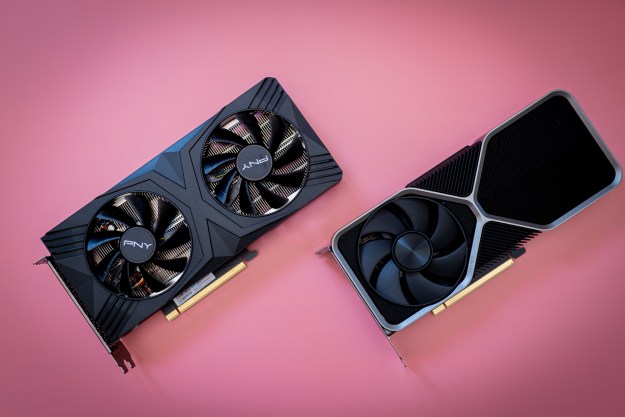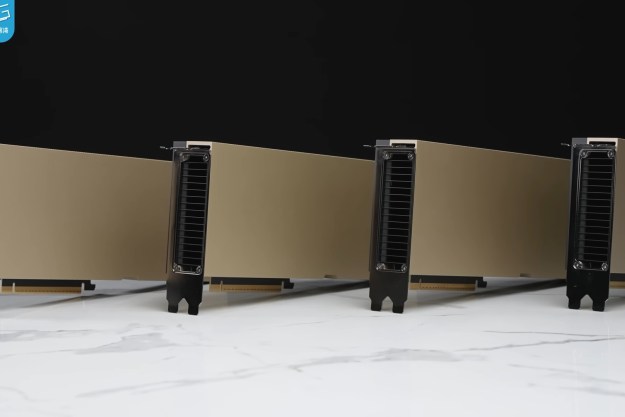Graphics developer Nvidia has formally launched its latest high-end PC video card, the GeForce GTX 590. The company is touting the card as the fastest DirectX 11 graphics card ever built, featuring a dual-CPU design that amounts to two GeForce GTX 580 systems glommed together and an innovative new cooling system that Nvidia says makes the GeForce GTX 590 the quietest high-performance card on the planet.

“The GTX 590 is the best dual GPU product ever built,” said Nvidia’s GeForce GPU general manager Drew Henry, in a statement. “With leading performance, support for multi-monitor 3D gaming, Quad SLI, and an acoustic envelope that begs to be heard for how quiet it is, the GTX 590 epitomizes what a perfect dual graphics card looks, performs, and sounds like.”
The GTX 590 offers a total of 1024 Nvidia Cuda processing cores, 3 GB of onboard GDDR5 video memory, and supports a heap of high-end graphics technologies: DirectX 11, Nvidia’s 3D Vision, Cuda, Physx
The GTX 590 sports dual vapor chambers as part of an innovative cooling system: Nvidia says the GTX 590 outputs only 48 db of noise, which it claims is twice as quiet as its nearest competitor under full graphics load. (It should be noted that “twice as loud” as 48 db would be about 58 db, not 96 db: the decibel scale is logarithmic, and human perception of sound is a little odd.)
However, for all that the GTX 590 has the parts of two GeForce GTX 580s slapped together, there are a few sacrifices along the way: the GPUs are running at a somewhat slower 607 MHz, the processor clock is running as 1215 MHz, and the memory clock runs at 3.4 GHz. Nonetheless, the GTX 590 should deliver impressive graphics performance…although third party reviews seems to put its performance in roughly the same league as AMD’s Radeon HD 6990, the current leader in single-card graphics systems. However, the GTX 590 should run much quieter than AMD’s offering.
The Nvidia GeForce GTX 590 is available now for an estimated price of $699.
Editors' Recommendations
- Nvidia RTX 50-series graphics cards: news, release date, price, and more
- 10 best graphics cards of 2024: finding the best GPU for gaming
- Asus’ new RTX 4090 shattered GPU overclocking records, and you’ll be able to buy it soon
- Here’s why I’m glad Nvidia might kill its most powerful GPU
- Nvidia’s peace offering isn’t working


